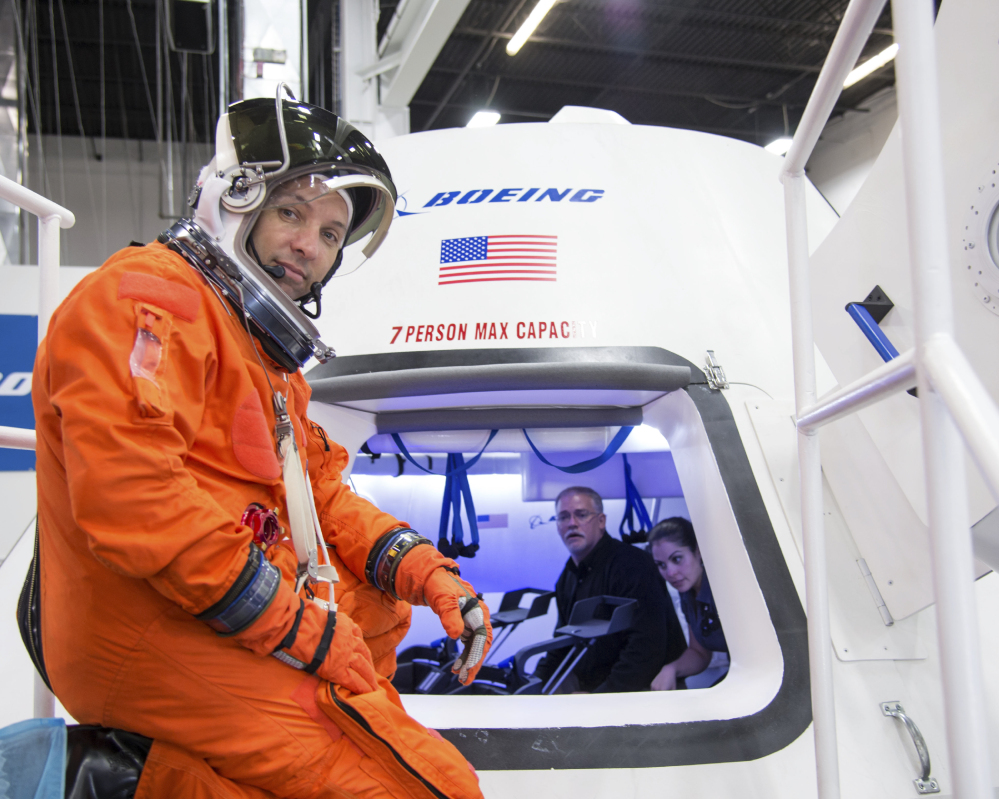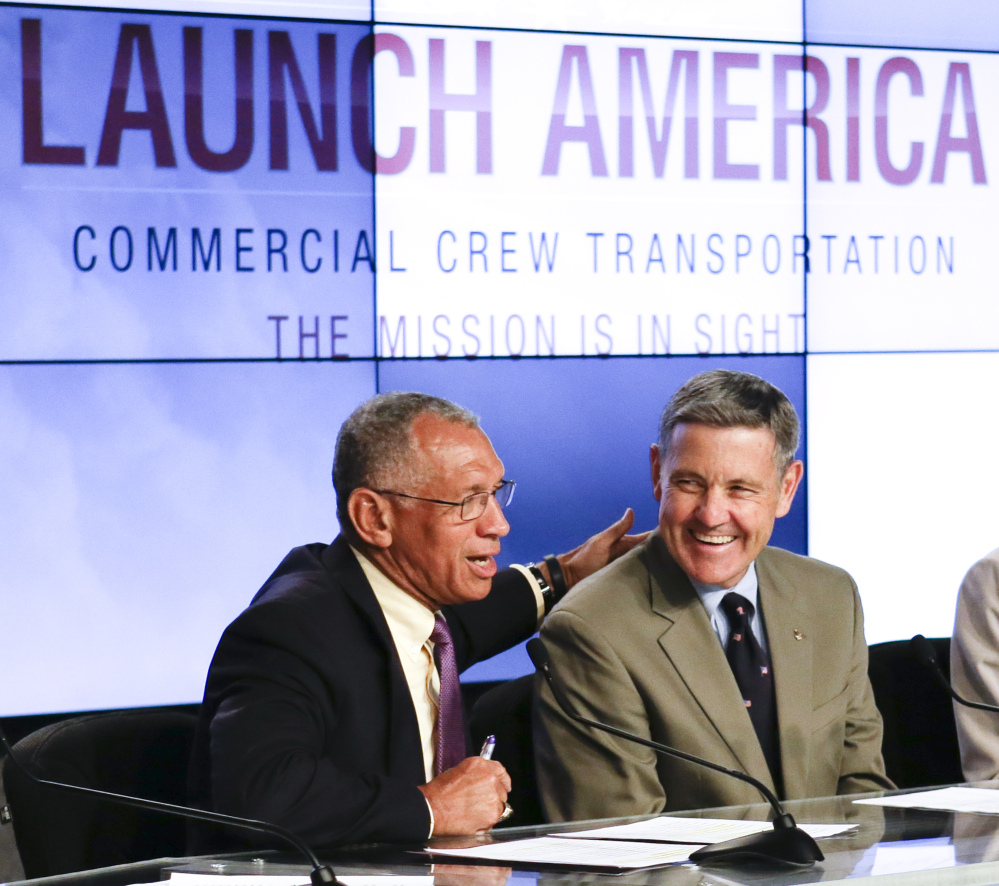CAPE CANAVERAL, Fla. — NASA is a giant step closer to launching Americans again from U.S. soil.
On Tuesday, the space agency picked Boeing and SpaceX to transport astronauts to the International Space Station in the next few years.
NASA Administrator Charles Bolden named the winners of the competition at Kennedy Space Center, next door to where the launches should occur in a few years. The wall behind him was emblazoned with the words “Launch America” and “Commercial crew transportation/The mission is in sight.”
“I want you to look behind me,” Bolden said, pointing both thumbs to the big, bright logos. “I’m giddy today, I will admit.”
The deal will end NASA’s expensive reliance on Russia to ferry astronauts to and from the space station. NASA has set a goal of 2017 for the first launch from Cape Canaveral, but stressed it will not sacrifice safety to meet that date.
NASA ended up going with a blend of old and new space: big traditional Boeing, which helped build the space station and prepped the space shuttles, and smaller, scrappier upstart SpaceX. Just 12 years old, the California-based SpaceX already is delivering supplies to the space station – its crew capsule is a version of its cargo carrier.
NASA will pay Boeing $4.2 billion and SpaceX $2.6 billion to certify, test and fly their crew capsules. The two contracts call for at least two and as many as six missions for a crew of four, as well as supplies and scientific experiments, said NASA’s Kathy Lueders, commercial crew program manager. The spacecraft will double as emergency lifeboats at the orbiting outpost.
SpaceX billionaire founder and chief executive, Elon Musk, was elated by Tuesday’s news, as were Boeing’s top managers.
“Deeply honored and appreciative of the trust that NASA has placed in SpaceX for the future of human spaceflight,” Musk said in a tweet.
Noted Boeing’s John Elbon, vice president and general manager of space exploration: “Boeing has been part of every American human space flight program, and we’re honored that NASA has chosen us to continue that legacy.”
The third major contender, Sierra Nevada Corp., had the most novel entry, a mini-shuttle named Dream Chaser that it was developing in Colorado.
U.S. astronauts have been riding Russian rockets ever since NASA’s space shuttles retired in 2011. The latest cost is $71 million per seat; NASA puts at least four of its astronauts on a Russian Soyuz every year. SpaceX has indicated its seats will cost $20 million apiece.
“From day one, the Obama administration has made it very clear that the greatest nation on Earth should not be dependent on any other nation to get into space,” Bolden told reporters.
The commercial crew program follows the successful cargo delivery effort underway for the past two years, also under NASA contract. The objective, for years, has been for NASA to hand space station flights to private companies and focus on getting astronauts into true outer space, with destinations such as asteroids and Mars. NASA is prepping its first-ever Orion deep-space exploration capsule for an unmanned test flight in December.
Musk’s Space Exploration Technologies Corp. – SpaceX for short – became the first private company to launch a spacecraft into orbit and retrieve it in 2010. The SpaceX Dragon capsule made its first space station trip, with supplies, in 2012.
The Dragon cargo carrier has been enhanced to carry as many as seven astronauts. It’s known as Dragon v2.
Boeing’s capsule is called CST-100.
Send questions/comments to the editors.




Success. Please wait for the page to reload. If the page does not reload within 5 seconds, please refresh the page.
Enter your email and password to access comments.
Hi, to comment on stories you must . This profile is in addition to your subscription and website login.
Already have a commenting profile? .
Invalid username/password.
Please check your email to confirm and complete your registration.
Only subscribers are eligible to post comments. Please subscribe or login first for digital access. Here’s why.
Use the form below to reset your password. When you've submitted your account email, we will send an email with a reset code.